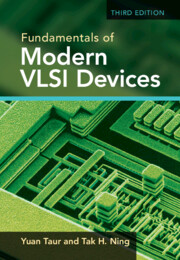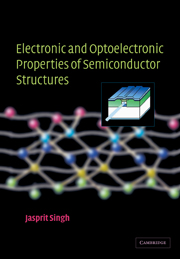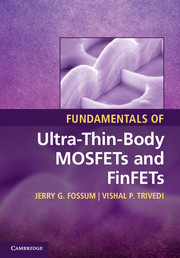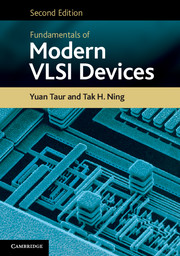Fundamentals of Modern VLSI Devices
This book examines in detail the basic properties and design, including chip integration, of CMOS and bipolar VLSI devices and discusses the various factors that affect their performance. The authors begin with a thorough review of the relevant aspects of semiconductor physics, and proceed to a description of the design of CMOS and bipolar devices. The optimization of these devices for VLSI applications is also covered. The authors highlight the intricate interdependencies and subtle trade-offs between those device parameters, such as power consumption and packing density, that affect circuit performance and manufacturability. They also discuss in detail the scaling, and physical limits to the scaling, of CMOS and bipolar devices. The book contains many exercises, and can be used as a textbook for senior undergraduate or first-year graduate courses on microelectronics or VLSI devices. It will also be a valuable reference volume for practising engineers involved in research and development in the electronics industry.
- The most up-to-date treatment available of a very important field
- Totally authoritative - both authors are Fellows of the IEEE and are based at one of the world's leading centers for microelectronics (IBM)
- Contains many exercises and industrially relevant examples - ideal as both a textbook and reference volume (will be a lot of interest in industry as it is the 'latest' from IBM)
Reviews & endorsements
' … well-written classroom text on VLSI devices … this book will also prove valuable to practicing designers and researchers because of the many advanced topics included, covers a wide range of material for its size … The book is logically organized. Both the ideas and the presentation are first-rate. The typesetting and diagrams are superb.' Computing Reviews
'Taur and Ning have written a book that will surely be referenced for many years. it is clear that the authors know what they are talking about (they are both IEEE Fellows and long-time employees of IBM). they draw heavily from their experience of industrial VLSI technology, and cover subjects such as device optimization, trade-offs between power consumption and packing density, and physical limits to scaling.' Carol-Mikael Zetterling, Royal Insitute of Technology, Stockholm
' … a book that will surely be referenced for many years.' Carl-Mikael Zetterling, Amazon
Product details
December 1998Hardback
9780521550567
496 pages
260 × 183 × 28 mm
1.055kg
233 b/w illus. 10 tables 74 exercises
Unavailable - out of print August 2000
Table of Contents
- 1. Introduction
- 2. Basic device physics
- 3. MOSFET devices
- 4. CMOS device design
- 5. CMOS performance factors
- 6. Bipolar devices
- 7. Bipolar device design
- 8. Bipolar performance factors
- Appendices.






